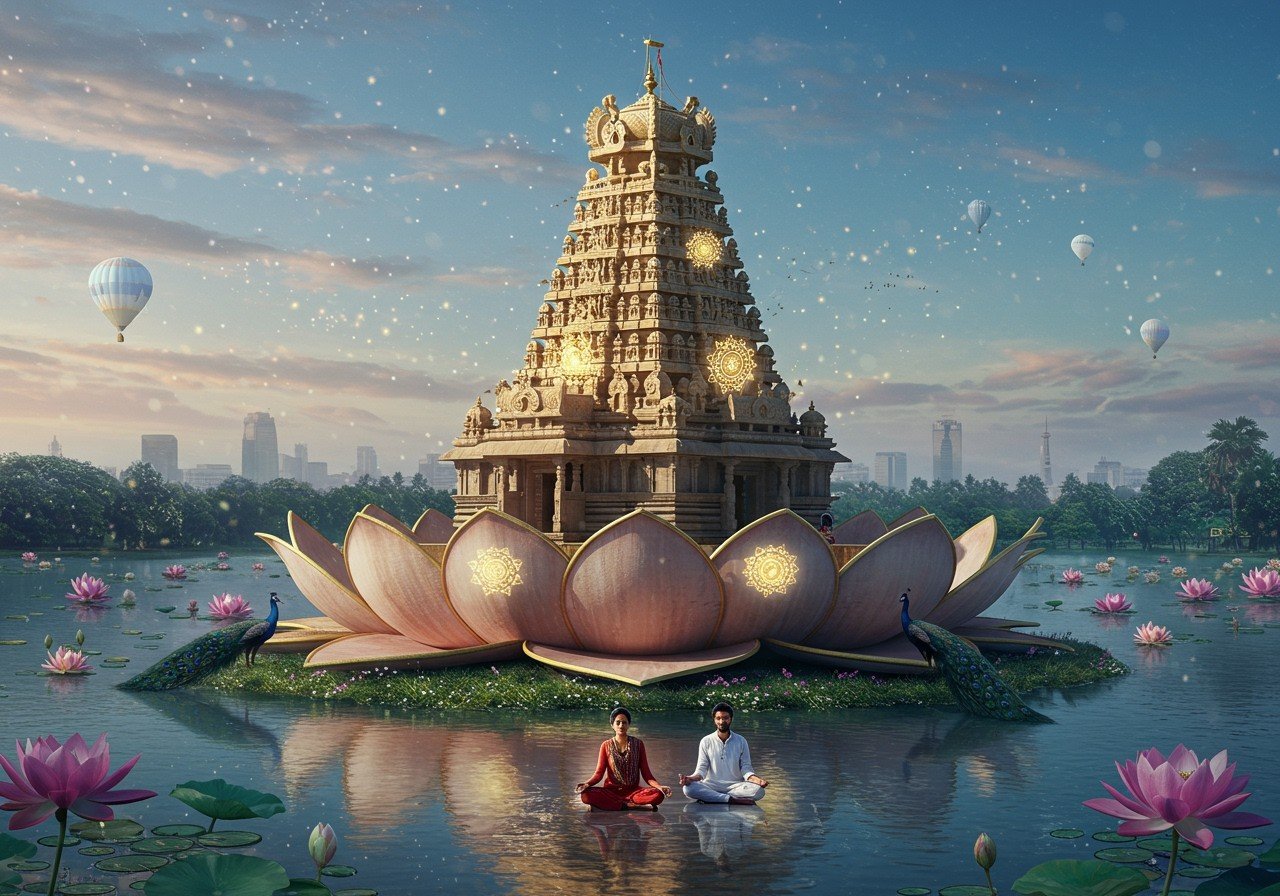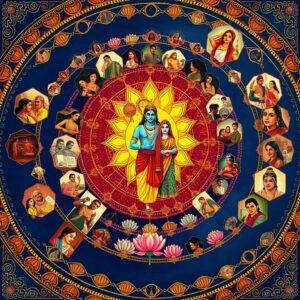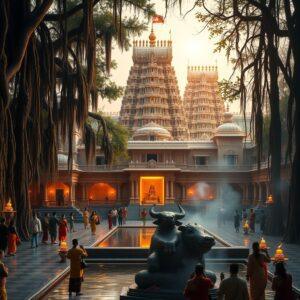
The Kodandarama Temple in Bangalore is a serene oasis amidst the bustling cityscape. This temple, rich in history, architectural beauty, and spiritual ambiance, offers a haven of peace for visitors and plays a vital role in preserving cultural traditions. Discover its historical significance and how it provides a spiritual retreat for the community.
Historical Significance of Kodandarama Temple
Established in the 17th century by the Maratha rulers, the Kodandarama Temple boasts a deep connection to the Ramayana. Dedicated to Lord Rama, Sita, and Lakshmana, it has evolved over the centuries into a significant spiritual center in Bangalore. Key historical events and renovations have shaped its current form, marking it as an important landmark.
Architectural Marvel of Kodandarama Temple
The temple showcases Dravidian-style architecture, complete with intricate carvings and sculptures depicting scenes from the Ramayana. The gopuram (tower), a striking feature symbolizing spiritual ascent, commands attention. The temple’s layout encompasses the sanctum sanctorum, mandapa (hall), and other key structures, all constructed using traditional materials and techniques.
Spiritual Significance of Kodandarama Temple
The spiritual ambiance of the Kodandarama Temple is crucial for devotees. Daily rituals and ceremonies, such as the elaborate aarti and abhishekam (ritual bathing), are conducted with reverence. The temple’s celebrations of major Hindu festivals like Ram Navami and Diwali underscore the significance of its deities. Devotees frequently share personal experiences of finding solace and peace within the temple’s sacred walls. You can learn more about the significance of Hindu rituals and ceremonies on our blog: Unveiling the Profound Significance of Aarti.
Kodandarama Temple as a Cultural Hub
The temple serves as a cultural hub in Bangalore, promoting classical music and dance through regular performances and festivals. Its contribution to preserving traditional arts and crafts involves the creation of ritual items and artifacts. Educational initiatives, like classes on Vedic chanting and Sanskrit, are organized by the temple, fostering unity and cultural pride within the community. Explore our collection of divine idols and statues for your home: Radha Krishna Brass Murti.
Visitor Experience at Kodandarama Temple
For visitors, practical information includes temple timings, which are generally from 7:30 am to 8:30 pm (as per Kodandarama Devasthana, Sampangi Rama Nagara), entry fees (if any), and a modest dress code. Visiting during off-peak hours allows for a more tranquil experience, avoiding large crowds. Nearby attractions include local eateries and markets. Guided tours and special events can further enhance your visit. Testimonials from tourists and locals often highlight the temple’s serene ambiance. For those interested in learning more about Lord Ganesha, we have a dedicated blog post: The Many Forms of Lord Ganesha.
Preserving Tradition in Modern Times
Preserving the heritage of the Kodandarama Temple amidst urbanization presents ongoing challenges. Local authorities and community organizations play a crucial role in maintaining the temple’s integrity. Modern technology influences rituals and visitor engagement, while sustainable practices are essential for waste management and energy conservation, ensuring the temple remains a sanctuary for generations to come.
Frequently Asked Questions about Kodandarama Temple Bangalore
Where is the Kodandarama Temple located in Bangalore?
Several Kodandarama Temples grace Bangalore, including locations in Malleswaram, Jayanagar 2nd Block, Kacharakanahalli, and Bellandur. Another notable location is in Sampangi Rama Nagara, as per online resources.
What is special about the Kodandarama Temple in Bangalore?
These temples are renowned for their serene ambiance and beautiful Dravidian architecture, offering solace and spiritual rejuvenation amidst the city’s vibrant energy.
What are the visiting hours for Kodandarama Temple?
While varying by location, most Kodandarama Temples welcome visitors from early morning until late evening. For example, the temple in Sampangi Rama Nagara is open from 7:30 am to 8:30 pm. Confirming specific timings for your chosen location beforehand is recommended.
Is there any dress code to follow when visiting Kodandarama Temple?
Modest attire is customary when visiting. Traditional clothing is welcomed, while shorts and sleeveless tops are generally discouraged.
Can I bring my children to the Kodandarama Temple?
Absolutely! The Kodandarama Temple embraces families, offering a welcoming environment for people of all ages to pray and seek blessings.
Are there any special events or festivals celebrated at the Kodandarama Temple?
The Kodandarama Temples enthusiastically celebrate various Hindu festivals, with Ram Navami, Navaratri, and Diwali being particularly significant.
Is there parking available at Kodandarama Temple locations?
Parking availability differs depending on the specific temple location. Some have designated parking areas, while others may necessitate parking on nearby streets.
Are there any COVID-19 guidelines or restrictions for visiting Kodandarama Temple?
Due to the evolving pandemic situation, it’s wise to check for any specific guidelines before your visit. These may include mask requirements, social distancing, and hand sanitization protocols.
Enhance Your Spiritual Journey with Poojn.in
Elevate your temple visits and home worship with authentic pooja items from Poojn.in. As India’s leading provider of sacred goods, we offer a wide selection of high-quality products to deepen your spiritual practice. Whether you’re seeking traditional brass utensils, fragrant incense, or beautifully crafted idols, Poojn.in has everything you need to create a sacred space. Visit www.poojn.in and explore our diverse collection today!


